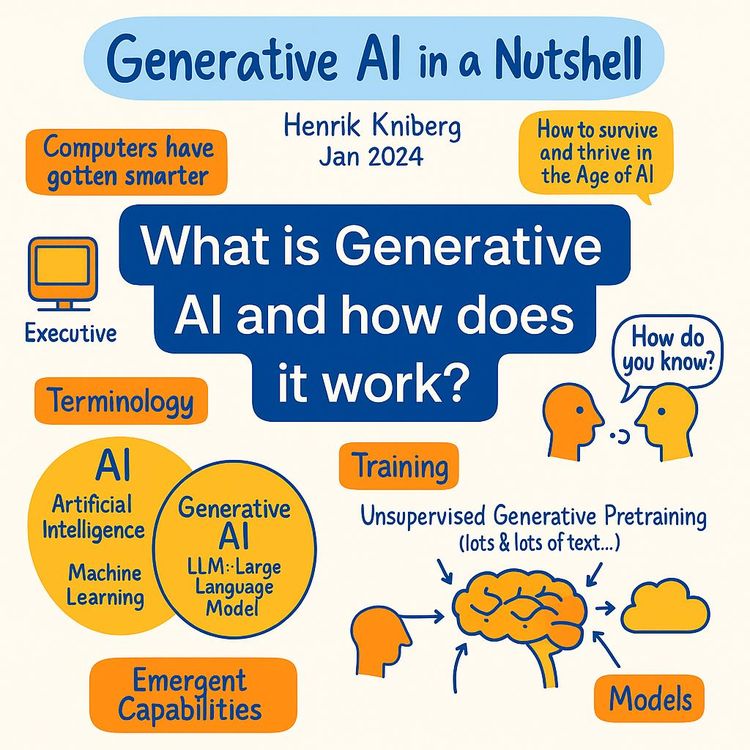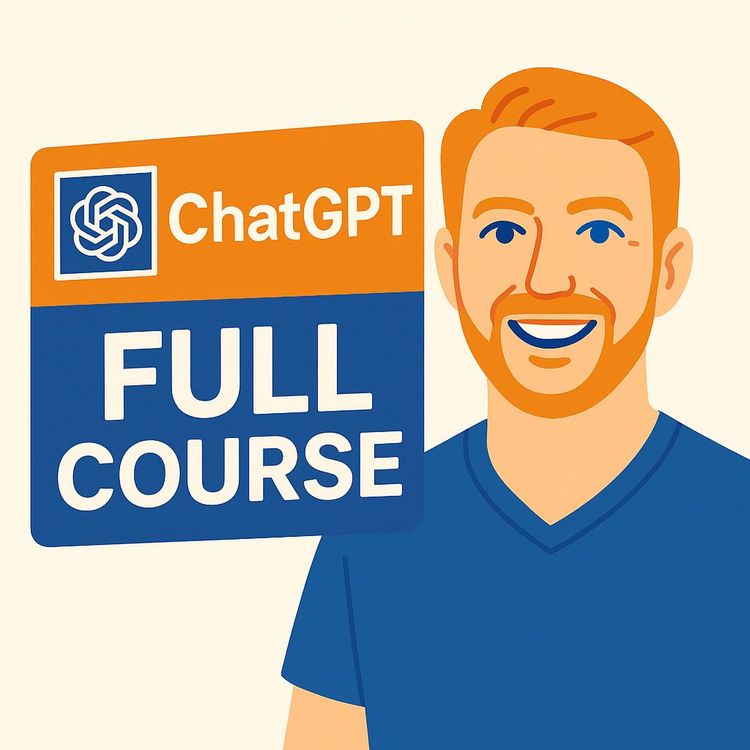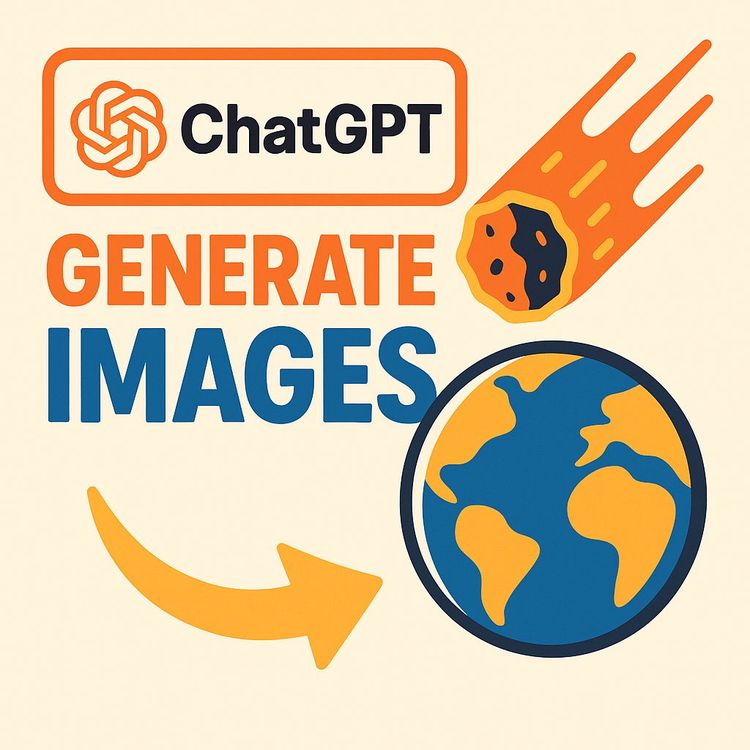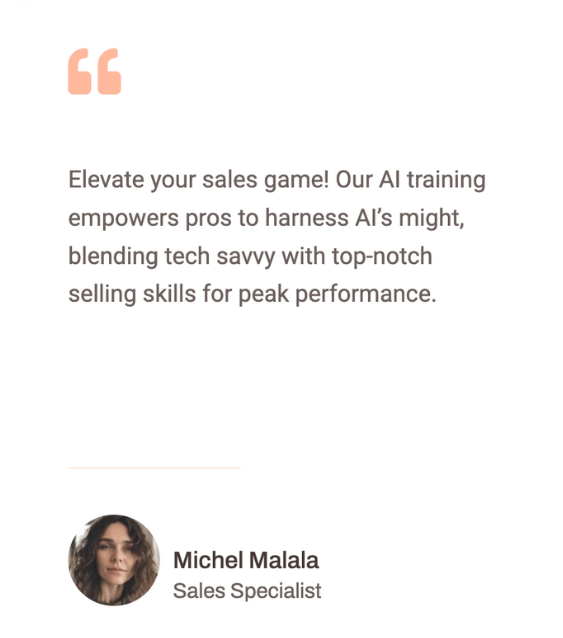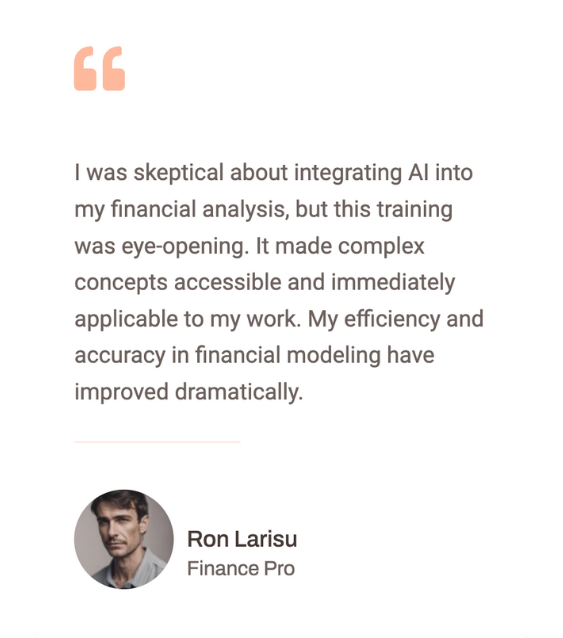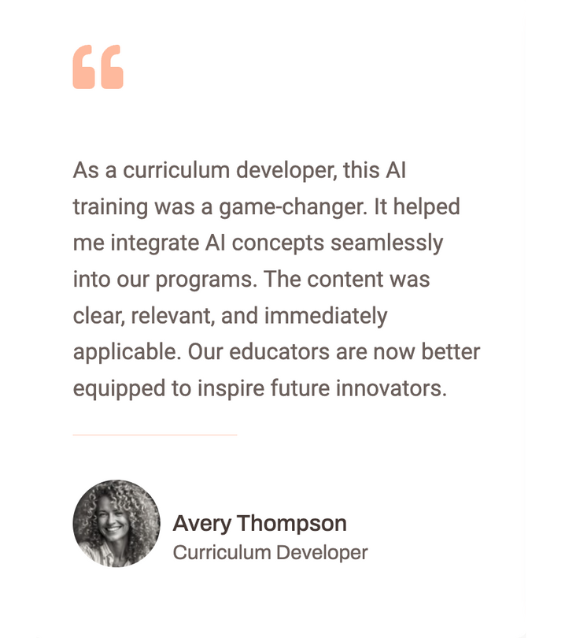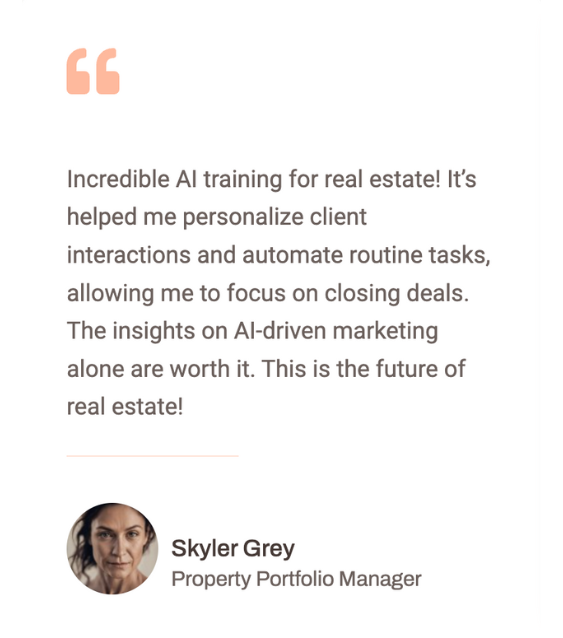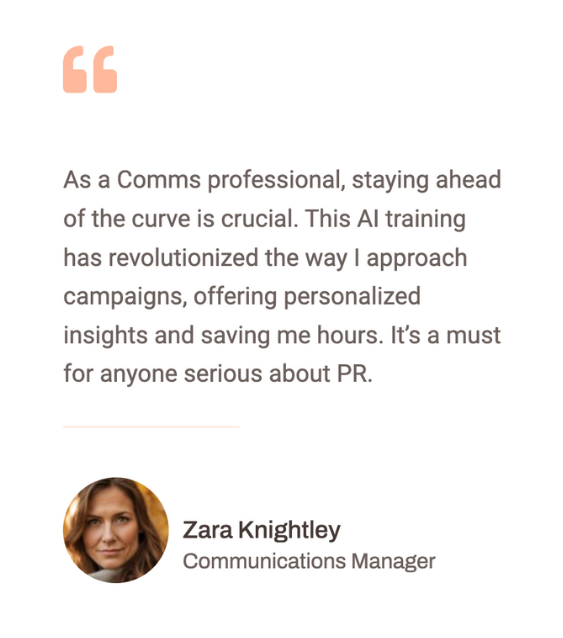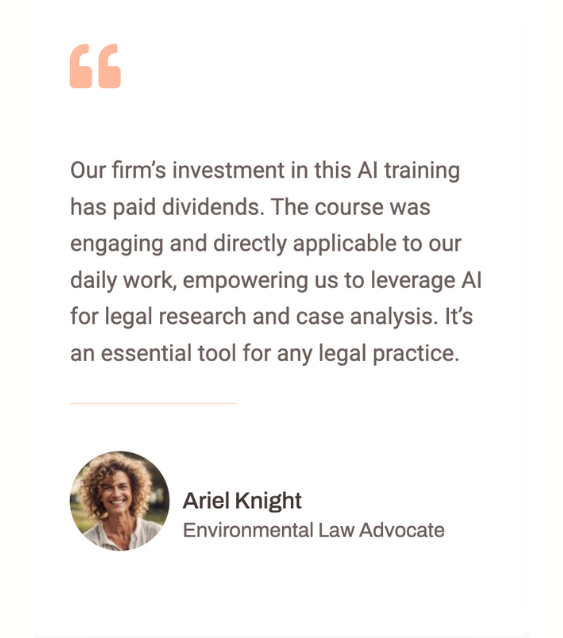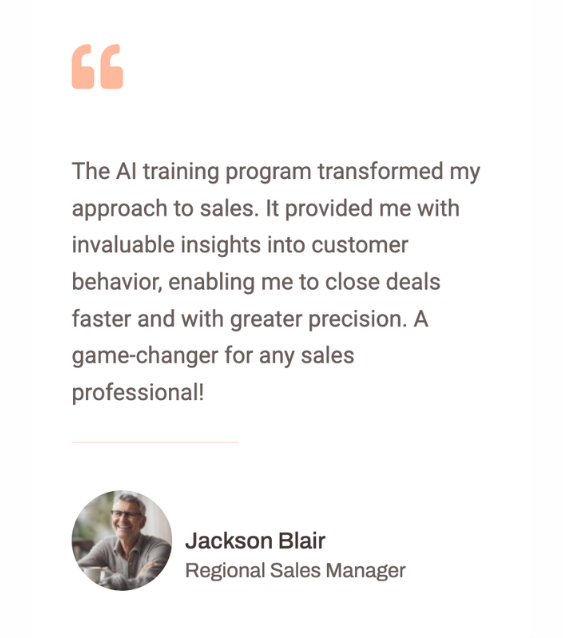Make Money Online with AI Content: Strategy, SEO, Monetization (Video Course)
Stop guessing with AI. Learn a practical system: research intent, stack prompts, pick high-value formats, and connect every post to traffic and revenue. Create work that sounds human and earns on purpose,without burnout or fluff.
Related Certification: Certification in Creating, Ranking, and Monetizing AI Content
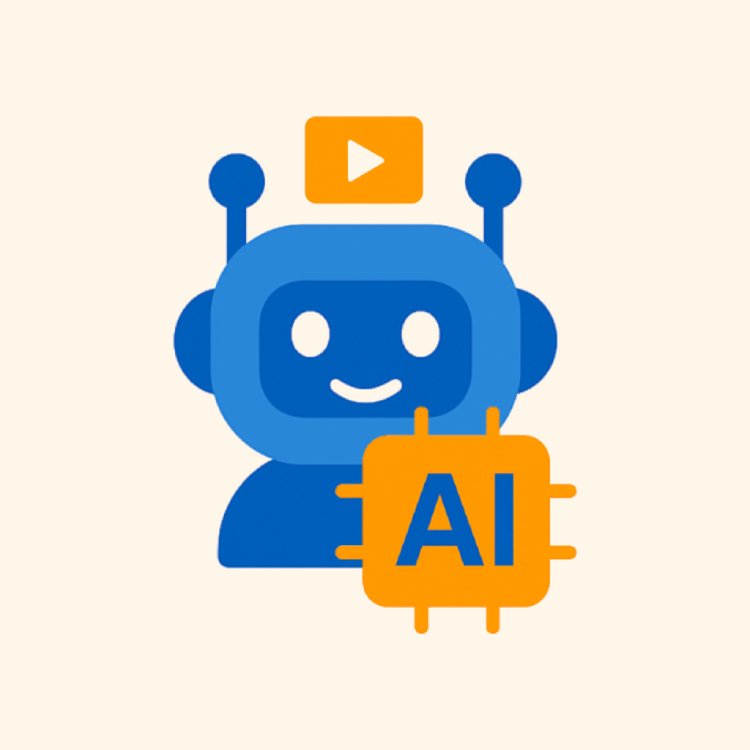
Also includes Access to All:
What You Will Learn
- Conduct SERP-first research to identify buyer intent and market emotion
- Build prompt stacks and a custom AI analyzer to generate strategic briefs
- Create pillar-and-spoke content and choose high-value formats for each intent
- Apply frameworks (Johnson Box, AIDA, PAS) to structure content that converts
- Design monetization funnels: lead magnets, affiliate flows, products, and upsells
- Drive integrated traffic and repurpose content while iterating with human oversight
Study Guide
How I Make Money Online With AI Content , Full Tutorial
Let's get honest for a second. Most AI content doesn't make a dime. It's not because AI can't help you. It's because people treat AI like a shortcut instead of a system. If you glue this course into your workflow, you'll stop guessing and start building content that makes money on purpose.
This course shows you the entire strategy , from finding buyer intent to crafting content that hits, to driving traffic, to monetizing it. It's not theory dumped into a doc. It's a practical, repeatable system: AI Systems + Traffic + Monetization. You'll learn how to analyze markets, prompt stack like a pro, structure content that converts, and stitch it all into offers people actually want.
By the end, you'll know how to research, produce, publish, and profit from AI-assisted content , without sounding like a robot or playing the volume game that burns everyone out.
The Core Problem: Why Most AI Content Fails
Most content fails because it's written for algorithms, not humans. When that happens, the platforms see it, people feel it, and your bank account reflects it. Here are the three main culprits and what to do instead.
1) Volume Over Value
Publishing 100 generic posts is not a strategy. It's an avoidance tactic. The surface-level approach gets flagged by search engines and ignored by readers. Great content solves a real problem, from a specific angle, with a clear next step.
Example 1:
A fitness blog publishes "Top 10 Ab Workouts" copied from everywhere else. No offer. No unique angle. It gets clicks but zero email signups and no program sales. Why? Everyone already knows crunches exist. There's no pain-resolution path.
Example 2:
A SaaS affiliate site publishes 50 short reviews like "Best CRM Tools." Thin content, no comparison tables, no video demos, no use cases per role. No one trusts it. No conversions. The volume approach buried the opportunity.
2) No Intent or Offer
If the content doesn't match why the user is searching , and it doesn't lead somewhere valuable , it's dead on arrival. People search to reduce uncertainty, increase control, or get closer to a desired identity. Your content must bridge that gap and present a relevant offer.
Example 1:
Query: "best email marketing for course creators." The user is likely ready to compare and buy. If your article is a vague overview with no feature-benefit comparisons and no trial links, you missed buying intent and the commission.
Example 2:
Query: "how to meal prep on a budget." The reader wants a plan. If you don't give a one-week meal plan PDF (email opt-in) and a low-ticket grocery list upsell, you left money on the table.
3) Platform Saturation and Generic Output
Search engines and social feeds are flooded with bland content. If your brand has no angle, voice, or unique perspective, it gets skimmed and forgotten. AI can generate text, but it can't replace taste. That comes from you.
Example 1:
Two channels post the same "AI tools for students" video. One host shares personal tests, time saved, and workflows. The other reads tool descriptions. The first grows. The second doesn't.
Example 2:
Two blog posts on "podcast microphones." One includes room treatment mistakes, voice types, and sound samples. The other lists specs. Guess who earns more affiliate commissions?
Bold truth:
"Over 90% of AI written content makes nothing." That's not a curse. It's an invitation to do it right.
The Profitable AI Content Formula
Winning content is the byproduct of a system, not a tool. The simple equation that keeps you grounded:
AI Systems + Traffic + Monetization
AI is the engine. Traffic is the road. Monetization is the destination. If any one of these is missing, profits stall.
Key Pillars You'll Build
- Strong Niche Targeting: The more specific the problem and person, the easier it is to create content that converts.
- Integrated Traffic System: You deliberately choose channels (SEO, YouTube, Pinterest, paid) and build for them.
- Monetization Funnel: Every piece of content has a path to a sale, lead, or commission.
- Unique Angle or Personality: Even if you don't show your face, you need a brand flavor people remember.
Example 1:
Niche: Indie app developers. Traffic: SEO + Twitter threads. Monetization: Affiliate links to hosting and analytics tools + a paid "App Launch Checklist" + coaching calls. Angle: "Lean, no-code launch playbooks."
Example 2:
Niche: Women's home strength training. Traffic: YouTube + Pinterest. Monetization: Digital programs + affiliate gym equipment. Angle: "Low-impact strength for busy professionals , smarter, not longer."
Guiding lines:
"AI doesn't make money. AI systems plus traffic plus monetization does."
"Clarity, not cleverness. Benefits, not features."
Step 1: Intent Discovery and Market Research (SERP-First)
Research isn't busywork. It's how you avoid writing 2,000 words nobody needed. You'll use search results to reverse-engineer what people want , before creating anything.
SERP Analysis (How-To)
- Search your primary keyword.
- Collect titles, URLs, and key takeaways from the top 3-10 organic results and the ads.
- Identify what formats appear (comparison, guide, listicle, case study).
- Note patterns: pricing mentions, buyer keywords, pain points, solutions, and CTAs.
Market Emotion Mapping (What to Extract)
- Dominant Emotions: Are users driven by fear (loss), aspiration (status), control (clarity), or excitement (novelty)?
- Core Problems: Which specific pain do the winners address?
- Awareness Stage: Top of funnel (curious), middle (comparing), bottom (ready to buy).
- Optimal Formats: What formats are rewarded for this query (e.g., "vs." pages, ultimate guides, checklists)?
Use Custom AI Analyzers
Build a "Market Emotion & SERP Analyzer" prompt that takes your list of URLs and outputs user intent, emotions, problems, content gaps, CTAs, and format recommendations. You can create a custom GPT or save a reusable prompt in your notes.
Prompt Template (Paste the SERP Data First):
"Act as a Market Emotion & SERP Analyst. From these titles and URLs, identify: 1) user intent, 2) dominant emotions, 3) core problems, 4) awareness stage, 5) strengths/weaknesses of current results, 6) content gaps and unique angles, 7) optimal content format, 8) recommended CTAs and offers that match intent. Be specific."
Example 1:
Keyword: "best accounting software for freelancers."
- Emotions: Anxiety about tax fines, desire for control, overwhelm.
- Problems: Categorizing expenses, invoicing, tax time chaos.
- Awareness: Middle to bottom; they're comparing.
- Format: Comparison review with pricing, feature table, and "best for" categories.
- Offers: Affiliate links to trials, a "Freelancer Tax Prep Checklist" lead magnet, and a consult call option.
- Angle: "10-Minute Monthly Close Method for Solo Entrepreneurs."
Example 2:
Keyword: "how to meal prep Mediterranean diet."
- Emotions: Aspiration for energy and longevity, fear of restrictive diets.
- Problems: Grocery list planning, balancing macros, boredom with meals.
- Awareness: Top to middle; research phase.
- Format: Step-by-step guide with images, one-week plan, printable list.
- Offers: Free checklist PDF + affiliate links to storage containers + a $19 recipe pack upsell.
- Angle: "Mediterranean Meal Prep for People Who Hate Cooking."
Pro Tips
- Document patterns , phrases like "easy," "best for beginners," "pricing" are gold for intent.
- Skim comments and People Also Ask. That's raw user psychology.
- Let SERP evidence override your assumptions. Follow the data.
Step 2: Priming the AI with Prompt Stacking
Single prompts give you generic output. Stacked prompts create context. You're not asking AI to write; you're training it to think with you.
Stack Flow
1) Audience Deep Dive → 2) Competitive Analysis → 3) Angle Identification → 4) Content Brief → 5) Draft → 6) Framework Rewrite
Audience Deep Dive Prompt
"Using our SERP analysis for [TOPIC], build a detailed audience profile: demographics, psychographics, key pains, goals, buying objections, desired identity, favorite platforms, words they use, and what would make them trust us."
Competitive Analysis Prompt
"List the strengths and weaknesses of the top 5 results. What do they do well? Where do they miss the mark? What information is absent that would make our content the best on the internet for this query?"
Angle Identification Prompt
"Brainstorm 10 unique angles underserved by current results. Prioritize proof-driven, story-friendly, and contrarian perspectives. Include who this angle is perfect for and why it will convert."
Content Brief Prompt
"Create a content brief for the winning angle. Include headline options, H2/H3 outline, key data points, proof opportunities, CTAs, and internal/external link strategy. Make it scannable."
Example 1 (Finance Niche):
- Topic: "high-yield savings for small businesses."
- Angle: "Set-It-Once Cash Buckets for Uneven Revenue Months."
- Brief includes: pain (cashflow spikes), proof (case study), table comparing APYs and fees, CTA to affiliate banks, downloadable "Cash Bucket Template."
Example 2 (Health Niche):
- Topic: "beginner kettlebell program."
- Angle: "15-Minute Kettlebell Habit for Desk Workers."
- Brief includes: posture issues, before-after photos (trust), weekly plan, safety tips, CTA for a $29 starter guide + kettlebell affiliate links.
Content Priming , Why It Works
With all this context in the chat, the draft you generate will reflect user intent, market gaps, and your angle , not a generic overview.
Step 3: Choosing High-Value Content Types (13 Formats)
Pick formats based on intent and ROI, not convenience. Here are the 13 high-potential types and when to use them.
1) Blog Posts
Use for SEO and authority. Deep solutions to specific problems.
Example 1:
"How to Create a 7-Day Content Sprint" with templates and a downloadable checklist.
Example 2:
"Beginner's Guide to Local SEO for Dentists" with appointment-booking CTAs.
2) Listicles
Use for scannable social traffic and quick wins.
Example 1:
"11 AI Tools That Save Freelancers 10 Hours a Week."
Example 2:
"25 High-Protein Breakfast Ideas That Aren't Eggs."
3) Sales Copy
Use for direct conversions on landing pages and offers.
Example 1:
Landing page for a "90-Day No-Code MVP Sprint."
Example 2:
Affiliate comparison page with strong proof and FAQs that close objections.
4) Email Sequences
Use to nurture, build trust, and sell repeatedly.
Example 1:
Soap Opera Sequence introducing your story and your core offer over five emails.
Example 2:
Three-email reactivation for "users who downloaded but never purchased."
5) Case Studies
Use for proof and authority; great for services and high-ticket.
Example 1:
"How We Cut Ad Spend 40% While Increasing Leads."
Example 2:
"A Nutrition Client Gained 8 Pounds of Muscle on 3 Workouts/Week."
6) White Papers
Use for B2B lead gen and authority plays.
Example 1:
"The True Cost of DIY Compliance for Fintech Startups."
Example 2:
"AI in Customer Support: Benchmarking Response Time vs. Satisfaction."
7) Ebooks / Lead Magnets
Use to build your list with high perceived value.
Example 1:
"The Creator's 30-Day Content Planner."
Example 2:
"Beginner's Blueprint to Strength Training at Home."
8) Press Releases
Use for quick attention, backlinks, and news hooks.
Example 1:
Announce a study: "Local Businesses Double Traffic with AI FAQs."
Example 2:
Feature launch: "New Meal Prep App Cuts Planning Time from 2 Hours to 15 Minutes."
9) Video/Audio Scripts
Use for top-of-funnel education and SEO.
Example 1:
YouTube script: "The 3-Phase Roadmap to Your First 1000 Subscribers."
Example 2:
Podcast episode: "What I'd Do to Make My First $1k with AI Tools."
10) Landing Pages
Use for opt-ins and sales. Single goal. Everything aligns to it.
Example 1:
Opt-in page for "Free 5-Day Funnel Challenge."
Example 2:
Sales page for a "Meal Prep Mastery" digital course.
11) Infotorials (Advertorials)
Use to educate while selling subtly.
Example 1:
"Why Home Gyms Fail , And the $300 Setup That Actually Gets Used."
Example 2:
"How I Cut My Editing Time in Half with One Workflow Change."
12) Newsletters
Use to retain attention and sell over time.
Example 1:
Weekly "AI Workflow of the Week" with tool recs and affiliate links.
Example 2:
"Strength Snacks": 3-minute reads with quick wins and soft pitches.
13) Interactive Quizzes
Use for engagement and segmentation.
Example 1:
"What's Your Content Bottleneck?" (outputs tailored resources).
Example 2:
"Find Your Perfect Protein Target" (emails plan + meal ideas).
Scenario Map 1 (B2C Fitness):
- Awareness: YouTube videos + quizzes ("Find your strength plan").
- Consideration: Blog posts, listicles, case studies.
- Conversion: Landing pages, sales copy, email sequences.
- Retention: Newsletter with challenges and new programs.
Scenario Map 2 (B2B SaaS Affiliate):
- Awareness: White paper summary videos, press release pick-ups.
- Consideration: Comparison posts, infotorials, webinars (scripts via AI).
- Conversion: Landing pages with bonus stack, email sequence.
- Retention: Newsletter + case studies + annual "tool stack" updates.
Step 4: Elevate Content with Proven Frameworks
Structure beats inspiration. These frameworks turn "good" into "bookmarked and shared."
Eyeball for Scanners Technique
- 70% of readers skim first. Add "eyeball anchors" every ~150 words: bold phrases, subheadings, bullets, boxes.
- Use short paragraphs. Lead with benefit-first headings. Pull quotes to highlight key points.
Example 1:
Original: A wall of text explaining email deliverability.
Improved: H2 "Stop Landing in Spam." Bold anchors: "Authenticate your domain," "Warm up new IPs," "Remove cold leads." Each with 2-3 line explanations.
Example 2:
Original: Long intro before value.
Improved: Start with a mini-summary "Johnson Box," then dive deeper.
The Johnson Box (Quick-Start Box Near Top)
Use a summary or quick-start guide at the beginning. Speak to the main pain and promise fast clarity. Include one primary CTA.
Template:
- Who it's for
- What you'll get in 3 bullets
- Quick action steps
- Primary CTA (lead magnet, trial, product)
Example Johnson Box:
"For busy creators who want consistent traffic without burning out.
- Build a 1-hour/week content system
- Repurpose strategically to 5 platforms
- Monetize with affiliate bundles and mini-offers
Start here: Download the free 'Pillar-to-Profit' workflow."
Persuasive Frameworks
- AIDA: Attention → Interest → Desire → Action.
- Soap Opera Sequence: Hook, backstory, dramatic tension, epiphany, solution, open loops across emails.
- Invisible Selling Machine: Teach, reveal gaps, amplify desire, then present solution. Sell by helping first.
Example 1 (AIDA in a Landing Page):
Attention: "Stop spending 10 hours a week on content for 3 likes."
Interest: "Here's the 3-block system that builds a month of posts in one afternoon."
Desire: "Creators use this to hit 10k views and 500+ weekly site visits without hiring."
Action: "Grab the template. It's free."
Example 2 (Soap Opera in Email):
Email 1 (Hook): "The day I almost quit content , and what fixed it in 20 minutes."
Email 2 (Backstory): Pain of inconsistency. Hint at solution.
Email 3 (Epiphany): Show the system.
Email 4 (Solution): Offer the starter kit.
Email 5 (Open Loop + Scarcity): Bonus ends, case study proof, call to act.
Step 5: Monetization Architecture (Make the Click Worth It)
Traffic without a monetization path is a hobby. Tie every piece of content to a clear next step.
Common Monetization Models
- Affiliate Marketing: Product recommendations that solve the problem.
- Digital Products: Templates, courses, checklists, toolkits.
- Services/Coaching: Done-with-you or done-for-you offers.
- Lead Generation: Email list as an asset; sell later with sequences.
- Sponsorships: Newsletter or video slots when audience grows.
Example 1 (Affiliate + Lead Magnet):
Article: "AI Video Editing for Non-Techies."
- Lead magnet: "15-Minute Editing Workflow" PDF.
- Affiliate offers: Editing software, stock libraries, templates.
- Email sequence: 5 emails teaching editing shortcuts → affiliate offers with bonuses.
- Bonus stack: Your custom LUTs or templates for buyers who use your link.
Example 2 (Digital Product Ladder):
Content: "Meal Prep in 60 Minutes."
- Low-ticket: $19 weekly meal plan pack.
- Mid-ticket: $99 6-week transformation kit.
- High-ticket: $499 coaching calls for custom plans.
- Upsell path: Each product includes credits towards the next tier.
Notes
- Always disclose affiliate relationships. It builds trust.
- Map offers to intent. A beginner guide should not pitch a $2,000 coaching package on page one. Warm them first.
Step 6: Traffic Systems (Integrated, Not Random)
Pick your traffic channels like you'd pick investments: a diversified mix that aligns with your strengths and audience behavior.
SEO (Compounding Growth)
- Keyword clusters around a core problem ("pillar + spokes").
- Internal links tie together your cluster and signal topical authority.
- Refresh posts based on performance and SERP changes.
YouTube (Discovery + Trust)
- Search-based videos for intent; personality for trust.
- Use chapters and strong hooks. Include affiliate and lead magnet CTAs in description and pinned comment.
Pinterest (Evergreen Visual Search)
- Great for food, fitness, fashion, home, and productivity. Pin templates and checklists that lead to emails and products.
Paid Ads (Acceleration)
- Use lead magnets with proven conversion. Retarget visitors with product offers.
Example 1 (Integrated for B2C Fitness):
- SEO pillar: "Beginner Strength at Home."
- Spokes: 10 posts like "Kettlebell vs. Dumbbells," "30-Minute Weekly Plan," "Joint-Friendly Routines."
- YouTube: Scripted demos for top 5 posts.
- Pinterest: Pin each workout with vertical graphics.
- Ads: Retarget site visitors to a $29 starter plan.
Example 2 (Integrated for B2B Tools):
- SEO pillar: "The Lean Startup Tool Stack."
- Spokes: "Best Analytics for Pre-Launch," "No-Code MVP Builders," "Email Tools by Use Case."
- YouTube: "Build a Landing Page in 15 Minutes (No-Code)."
- Newsletter: Weekly stack updates with affiliate bonuses.
- Ads: Boost comparison posts that convert well.
Step 7: Human-in-the-Loop Editing and Publishing
AI drafts. You direct. That's the partnership. Your review is what turns content into a brand asset.
Editing Workflow
- Ear Test: Read it aloud. If you trip, fix it.
- Clarity Pass: Replace fluff with plain language. "Clarity, not cleverness."
- Proof Pass: Add screenshots, sources, and real examples.
- Brand Voice: Decide your tone (direct, playful, clinical). Keep it consistent.
- Eyeball Anchors: Subheads, bold phrases, bullet points every ~150 words.
- Johnson Box: Put a mini-summary and CTA near the top.
- Compliance: Disclose affiliates; avoid medical/financial promises you can't back up.
Example 1:
AI writes: "This approach is highly beneficial for users who want to maximize efficiency."
You edit: "Do this and you'll save 2-3 hours this week." Specific. Personal. Useful.
Example 2:
AI writes a section on "tools." You add: screenshots, pricing as of last review, pros/cons from your experience, and a 30-second "quick start" under each tool.
Step 8: Repurpose and Syndicate (Pillar → Spokes → Everywhere)
Repurposing multiplies the return on your best ideas. One pillar can feed your entire content system.
Repurpose Plan
- Pillar Post: The comprehensive guide that anchors a topic.
- Spokes: 8-12 related posts answering sub-questions.
- Social Clips: 12-20 bite-sized quotes, carousels, and shorts.
- Email: 3-5 emails drawn from your pillar's key points.
- Video: A script stitched from your pillar's outline.
- Lead Magnet: A checklist or template extracted from the pillar's process.
Example 1:
Pillar: "Ultimate Guide to Creator Operating Systems."
- Spokes: "Daily Dashboard," "Weekly Review," "Idea Vault," "Distribution Calendar."
- Social: 15 quotes + 5 carousels + 3 reels.
- Email: "The 3-Lever System I Use to Ship Weekly."
- Lead magnet: Notion template of the system.
Example 2:
Pillar: "Meal Prep for Busy Professionals."
- Spokes: "One-Pot Recipes," "Protein-First Breakfasts," "Sunday 60-Minute Prep."
- Video: "My 3-Pan Meal Prep Routine."
- Email: "The 5-Switch Grocery List."
- Lead magnet: Printable plan + grocery list.
Step 9: Continuous Refinement with Human Oversight
You don't publish and pray. You publish, watch, and iterate.
Refinement Steps
- Track: Impressions, CTR, time on page, scroll depth, email conversions, affiliate clicks, sales.
- Update: Improve intros, add anchors, refresh screenshots and pricing, expand FAQs based on comments and emails.
- Test: Swap headlines, Johnson Box copy, and CTAs. Move the CTA higher if readers bounce early.
Example 1:
Your comparison post gets views but no clicks. You add a "Quick Picks" Johnson Box at the top with "Best Overall," "Best Budget," "Best for Teams." Affiliate clicks jump.
Example 2:
Your YouTube script loses viewers at minute two. You add a 10-second proof segment with results and skip ahead chapters. Average watch time increases.
From Research to Revenue: A Full Workflow You Can Copy
1) Adopt a SERP-First Workflow
- Identify the keyword and intent.
- Analyze top results and ads.
- Use your AI analyzer to extract emotions, problems, awareness, format, and gaps.
- Decide your unique angle.
Example:
"best webinar platforms." Add pricing comparisons, live vs. evergreen use cases, and a "60-Minute Launch Timeline." None of the top results cover the launch timeline , that's your angle.
2) Develop a Prompting System (Prompt Stack)
- Save your deep dive prompts, competitor prompts, angle prompts, brief prompts, draft prompts, and framework rewrite prompts.
- Keep them in a single doc you can paste fast.
Example:
"Use AIDA to rewrite the intro, add a Johnson Box for scanners, and create a 'Quick Picks' block. Keep all claims proof-backed."
3) Implement a Johnson Box
- Add a quick-start summary near the top of long content with a primary CTA.
- Make the first 8 seconds count on video: fast hook, visual proof, and a reason to stick.
Example:
Blog Johnson Box with 3 bullets and a bold CTA to your free checklist. On video: a lower-third graphic with "Download templates in the description."
4) Select Content Types Strategically
- Map formats to funnel stages. Guides at top, comparisons mid, sales pages bottom.
- Make sure each asset has a job and a next step.
Example:
Top: "How to pick your first kettlebell."
Middle: "Kettlebell vs. Dumbbell: Which builds strength faster?"
Bottom: "15-Minute Home Strength Starter , $29."
5) Focus on Pillar and Spoke Content
- Build one high-quality pillar a month. Produce spokes weekly. Repurpose daily.
- Everything links to the pillar and key offers.
Example:
Pillar: "AI Content Operating System." Spokes: "SERP Analyzer Prompt," "Prompt Stack Template," "Johnson Box Examples."
6) Continuously Refine with Human Oversight
- Never publish raw AI output. Edit, add proof, and inject brand voice.
- Update quarterly or when metrics dip.
Example:
Swap generic tool screenshots with your annotated versions, add timestamps, and paste real results from your analytics.
Using AI as Analyst, Not Just Writer
AI's underrated superpower is analysis at scale. Feed it structured data; ask for structured insight. Then use it to generate better briefs and drafts.
Example 1:
Paste 10 review snippets from Amazon about a microphone. Ask AI: "Summarize common complaints, praise, and buying context; create a pros/cons table and an FAQ from real concerns." Now your review answers what buyers actually ask.
Example 2:
Copy comments from the top 3 YouTube videos about your topic. Ask AI: "Extract fears, quick wins, and misunderstood points. Suggest 5 video hooks that directly address these."
Difference-Makers You'll Use Every Time
"Spend more time understanding why someone wants to look up what they want to look up...than we do actually creating the content."
That's where the money is , in intent and emotion, not just keywords.
"Content structured differently is the difference between making money and not making money."
This is why we use anchors, boxes, and frameworks. You're designing for attention, not hoping for it.
Advanced: Building Your Custom AI Analyzer ("AI Profit Scoop" Style)
Create a mini system that turns SERP chaos into strategy in minutes.
Input
- Keyword
- Top 5-10 URLs with titles
- Ad headlines (if any)
- People Also Ask questions
Output
- Intent (learn, compare, buy)
- Dominant emotions (fear, control, aspiration, excitement)
- Core problems (3-5)
- Awareness stage (TOFU/MOFU/BOFU)
- Winning formats (comparison, guide, list, case study)
- Content gaps and unique angles
- CTA and offer recommendations
- Suggested outline and Johnson Box draft
Example 1:
Keyword: "podcast hosting for beginners."
- Intent: Compare → buy.
- Emotions: Overwhelm; fear of "messing up the feed."
- Problems: Distribution, analytics, pricing confusion.
- Format: Comparison with "best for" picks, setup steps.
- CTA: Affiliate trials + "7-Day Launch Plan" lead magnet.
Example 2:
Keyword: "how to price freelance design."
- Intent: Learn → apply → buy template.
- Emotions: Anxiety about undercharging; desire for confidence.
- Problems: Pricing structure, scope creep, contracts.
- Format: Guide + calculator + case studies.
- CTA: $29 pricing template pack.
Refinement Frameworks to Bake Into Your Process
PAS (Problem-Agitate-Solve)
- Problem: Name it precisely.
- Agitate: Show the hidden cost of not fixing it.
- Solve: The simplest next step (your solution).
Example 1:
"You publish weekly but it feels invisible. That invisibility kills motivation. Use the 3-Block Repurposing System and watch every post multiply."
Example 2:
"Your meal prep falls apart by Thursday. Then takeout happens. Use this 3-pan method and your Friday will thank you."
Risk Reversal
- For products and affiliates: Bonuses, guarantees, trial periods, or "first 100 buyers get templates."
Example 1:
Affiliate: "Use my link and I'll send you my preset pack and onboarding checklist."
Example 2:
Course: "Try the first module. If it's not useful, get your money back."
Content Examples: Start-to-Finish Mini Builds
Example 1: Affiliate Blog + Email (B2B Tools)
- Keyword: "best proposal software for freelancers."
- SERP insights: Pricing confusion; templates matter; integrations with e-sign and invoicing.
- Angle: "The 20-Minute Proposal That Wins Work (with 4 templates)."
- Johnson Box: "If you just want quick picks: Best overall, best budget, best for teams."
- Offer: Affiliate trials + bonus template pack.
- Email follow-up: 5-day sequence on "closing faster."
Example 2: Product Ladder (Fitness)
- Content: "Desk Worker Strength Plan: 15 Minutes a Day."
- Lead magnet: Printable weekly plan + video walkthrough.
- Low-ticket: $29 "Phase 1" program.
- Upsell: $99 full 8-week system + form coaching.
- Traffic: YouTube demos + Pinterest recipe pins + SEO spokes.
Thirteen Content Types , How to Win with Each (Deeper Tips)
1) Blog Posts
- Lead with the transformation and roadmap. Add "Quick Start" near the top.
- Include proof: screenshots, numbers, client quotes.
2) Listicles
- Add context: "Who it's for," "Why it's good," "What to avoid."
- End each item with an action step.
3) Sales Copy
- Write headlines last. Use subheads that sell. Stack proof near the buy button.
4) Email Sequences
- One idea per email. Open loops for the next send. Alternate value and soft pitch.
5) Case Studies
- Customer as hero. Your method as guide. Before/after metrics and quotes.
6) White Papers
- Use original surveys or synthesize public data with proprietary insight.
7) Ebooks / Lead Magnets
- Make it short and immediately usable. Add a 1-page checklist version.
8) Press Releases
- Tie to a data point or trend. Include a unique stat people will cite.
9) Video/Audio Scripts
- Open with a pattern interrupt and a tangible promise. Keep a fast pace.
10) Landing Pages
- One goal. Remove all distractions. Add a FAQ that answers objections.
11) Infotorials
- Teach through story. Put results up front, then reveal the process and product.
12) Newsletters
- Predictable format (example: "One Big Idea, One Play, One Tool"). Consistency wins.
13) Quizzes
- Make outcomes feel personal. Follow up with segmented emails and offers matched to the result.
SEO + Social + Email: The Simple Funnel That Prints
Top (Attention)
- YouTube, Pinterest, short posts; tease transformation; lead to pillar content.
Middle (Trust)
- Pillars, comparisons, case studies; educate and pre-frame offers.
Bottom (Conversion)
- Landing pages, sales emails, demos, bonuses.
Example 1:
Short video → Pillar guide → Lead magnet → Email series → Product sale.
Example 2:
Pinterest pin → Recipe post → Grocery list opt-in → Affiliate cookware bundle.
Execution Templates You Can Steal
Angle Brainstorm Seeds
- "The 80/20 version of [topic] nobody explains."
- "The lazy person's guide to [result]."
- "3 mistakes I made before [result] and the fix."
Hook Lines
- "If I had to start from scratch tomorrow, here's what I'd do."
- "What I wish I knew before [pain]."
CTA Starters
- "Grab the template I use."
- "Try it free; I'll send you my bonus pack."
- "Book a 10-minute walkthrough."
Example 1:
Fitness: "If I had to rebuild my strength with 15 minutes a day, here's the exact plan." CTA: "Download the 2-page plan."
Example 2:
Software: "What I wish I knew before choosing a CRM as a solo founder." CTA: "Get my comparison sheet."
What This Means for You (Roles)
For Marketers & Businesses
- Build campaigns around pillars, not isolated posts.
- Use AI for research and drafts; you add positioning and proof.
Example 1:
Launch a quarterly pillar on a core pain, then drip spokes and clips for 90 days.
Example 2:
Turn customer support FAQs into SEO hits and sales enablement content.
For SEO Professionals
- Go beyond keywords; map emotions and awareness stages.
- Use SERP-first briefs and internal linking by intent.
Example 1:
Shift from "best [tool]" to "best [tool] for [specific role/workflow]."
Example 2:
Add a Johnson Box and Quick Picks to improve CTR and conversions.
For Freelance Writers & Creators
- Sell strategy, not words. Package research, prompts, and frameworks as your service.
- Bundle repurposing and email sequences for higher retainers.
Example 1:
Offer a "SERP-to-Sales System" package: research, brief, pillar, spokes, email sequence.
Example 2:
Pitch "30 days of content from one pillar" with measurable outcomes.
For Entrepreneurs
- Build one profitable content engine per niche. Don't chase every platform.
- Productize your best processes.
Example 1:
Sell your Notion templates that mirror your content workflow.
Example 2:
Offer "Done-With-You Content Sprints" for businesses that want quick wins.
Common Mistakes and Simple Fixes
Mistake: Starting with a blank page.
Fix: Start with SERP and audience analysis. Then brief. Then draft.
Mistake: Writing for everyone.
Fix: Name your reader and their current situation in the first 100 words.
Mistake: Over-editing voice, under-editing structure.
Fix: Add anchors, summaries, and CTAs before polishing lines.
Mistake: No next step.
Fix: Every asset ends with one clear action that fits the intent.
Practice: Quick Reps to Cement This
Multiple-Choice
1) What's the primary goal of a SERP analysis?
a) Find as many keywords as possible
b) Copy competitor content
c) Understand user intent and what the search engine deems valuable
d) Check your site's ranking
2) "Prompt stacking" is used to:
a) Create a final article with one long prompt
b) Build context through a conversational sequence of prompts
c) Test multiple AI models at once
d) Generate only listicles
3) The "Eyeball for Scanners" principle involves:
a) Long paragraphs
b) Complex vocabulary
c) Easy-to-skim structure with headings, bold text, short paragraphs
d) Using as many images as possible
Answers:
1) c
2) b
3) c
Short Answer
- Explain "AI Systems + Traffic + Monetization = Profit" in your own words.
- What is a Johnson Box and where does it go?
- What does "human-in-the-loop" mean for AI content?
Discussion Prompts
- Pick a niche you know. Run a SERP analysis for "best [tool] for [audience]" or "how to [result]." What emotions, problems, and formats show up?
- Take a generic paragraph and rewrite it for scanners (anchors every ~150 words), then rewrite it for persuasion (benefits over features, "you" language).
- If you sold custom fitness plans, which three content types would you prioritize and why?
Mini Playbooks You Can Launch This Week
Playbook 1: Affiliate Fast Start
- Pick one high-intent keyword ("best X for Y").
- Run SERP analysis; extract emotions and gaps.
- Write a comparison post with Quick Picks + Johnson Box.
- Add a bonus for buyers via your link.
- Send 3 emails: problem, solution, bonus deadline.
Playbook 2: Lead Magnet to Product
- Create a 2-page checklist that solves a sub-problem.
- Build a simple landing page with AIDA copy.
- Publish a pillar that links to it; repurpose 10 micro-posts.
- Write a 5-email Soap Opera Sequence ending in a $29 product.
Playbook 3: YouTube to List
- Script a "How I'd start from zero" video.
- In-video CTA to a template.
- Description links to your landing page.
- Follow-up email sequence offers your starter kit.
Final Reminders That Keep You Profitable
Strategy Precedes Creation
Research and intent mapping come first. That single step puts you ahead of most creators.
Intent Is Everything
Match the reason for the search, not just the words. Solve an actual problem and present the next step.
AI Is Your Analyst and Draft Partner
Use it to extract patterns, generate briefs, and write drafts. You supply direction, taste, and proof.
Prompt Stacking Is Non-Negotiable
A multi-step conversation with your AI produces superior work every time.
Human-in-the-Loop Is Essential
Edit for clarity, structure for scanners, and add evidence. Never publish raw AI output.
Repurpose and Syndicate
One high-quality pillar can fuel your entire content ecosystem for weeks.
Conclusion: From Noise to a Real Business
There's a line between content that exists and content that earns. You cross it by thinking like a strategist, not a typist. You start with why people search, you design content that moves them, and you direct that attention to offers that help. AI is your accelerator , not your autopilot.
Build your system like this:
- Research first with SERP and emotion mapping.
- Prime your AI with prompt stacks and strategy.
- Choose the right formats and layer proven frameworks.
- Install monetization from the start.
- Drive integrated traffic and repurpose relentlessly.
- Keep your hands in the loop and refine based on data.
If you do this, you'll stop publishing into the void and start building a content engine that funds your business. It's not about cranking out more. It's about creating the right thing, for the right person, with a clear next step. Start with one pillar this week, follow the workflow, and let the system compound.
Frequently Asked Questions
This FAQ gives direct, practical answers to the most common questions about making money online with AI-generated content. It's structured from basics to advanced tactics so you can build a clear system: research user intent, create strategic content with AI, drive traffic, and monetize. Each answer includes key takeaways, examples, and next steps so you can implement fast without guessing.
Fundamental Concepts
Why does most AI-generated content fail to make money?
Value beats volume.
Most AI content fails because it prioritizes speed and quantity over usefulness. Search platforms reward content that solves a real problem, keeps attention, and drives action,generic AI text usually doesn't.
There's no intent-to-offer bridge.
Creators publish posts without a clear path from the reader's goal to a relevant offer (affiliate product, lead magnet, or service). If your article doesn't move the reader to a next step, it won't make money.
Platform saturation punishes sameness.
YouTube, blogs, and social feeds are flooded with lookalike content. Engagement signals (watch time, clicks, saves) surface original insight, not recycled lists.
No business system.
Profitable content sits inside a system: research → creation → traffic → monetization → measurement. Example: An SEO post on "best email tools for coaches" that compares tools by use case, links to an affiliate, and pushes an email checklist will outperform a "top 10" list with no strategy.
What is the formula for creating successful AI-powered content?
AI Systems + Traffic Generation + Monetization = Profit.
That's the full stack. Skip one, profit dies.
AI Systems:
Use prompt stacking, SERP analysis, and audience profiling to produce useful, original content. Example: Analyze top results for "B2B video hosting," extract objections, craft a comparison that maps features to outcomes (speed, analytics, security).
Traffic Generation:
Pick one core channel (SEO, YouTube, or email) and a support channel (social clips or paid retargeting). Consistency compounds.
Monetization:
Align the content with a clear revenue path: affiliate offers, digital products, services, or email list growth that leads to sales. Add strong CTAs, comparison tables, and a Johnson Box to capture action. The model works because every asset exists to create attention, trust, and a transaction.
What is user intent and why is it the most critical element?
User intent = job to be done.
It's the reason behind the search. Are they researching, comparing, or ready to buy? Content must match that state,or it won't rank, engage, or convert.
Intent drives structure and offer.
"Best video hosting for business" = comparison, proof, and pricing. "How to host videos securely" = tutorial + checklist. "Vimeo vs Wistia" = head-to-head, use-case mapping, and a clear recommendation with affiliate links.
Emotions guide decisions.
B2B buyers want control, reliability, and proof. Consumers want simplicity and transformation. Address the fear (wasted money), desire (faster growth), and constraints (budget, time). Do that and your content sells without sounding salesy.
What is SERP analysis and how is it used in this process?
SERP = what Google already trusts.
Analyze the top 10 results for your keyword. Note formats (guide, list, comparison), angles, subtopics, FAQs, and repeated promises. That's your blueprint.
Reverse-engineer intent.
If top results are "X vs Y," the market is close to buying. If they're "Ultimate Guide," the market needs education. Match that format, then outperform on clarity and depth.
Find gaps and win.
Spot what's missing (pricing tables, ROI math, case examples, screenshots). Fill the gaps and add a Johnson Box and CTAs. Example: For "best course platforms," add a decision matrix by business model (coaching, community, cohort) and ROI scenarios.
The Strategic Content Creation Process
What is the absolute first step before writing any content with AI?
Intent discovery via SERP analysis.
Before drafting, study the top-ranking pages for your target keyword. Extract: target persona, use cases, emotional triggers, and conversion paths. Paste URLs into your AI and ask for patterns and gaps.
Turn insights into a plan.
Define the angle, outline, and offer. Example: Keyword "email sequence for SaaS trial." Plan: 7-email sequence template, examples, swipe files, plus an opt-in for a free "Trial Conversion Calculator."
The payoff:
You'll create content that fits what searchers want and leads them to a next step that makes money.
What is "prompt stacking" and how does it create superior content?
Stack = context compounding.
Instead of a single prompt, you build context step-by-step: SERP insights → audience persona → angle → outline → draft → refine.
Example stack:
1) Analyze SERP for "YouTube SEO for coaches." 2) Build persona (new coach, no editor, wants leads). 3) Propose 3 angles. 4) Draft with "problem-solution-proof-CTA." 5) Rewrite intro using PAS. 6) Add Johnson Box and comparison table.
Result:
Fewer rewrites, clear positioning, and content that reads like it was written by someone inside the market.
How can AI help create a detailed audience profile?
Use SERP → persona prompts.
Ask AI to infer demographics, psychographics, pains, objections, and goals from the top-ranking pages. Then refine with your own customer data.
Make it actionable.
Turn traits into copy: "Values control" → emphasize analytics and ownership. "Fears buyer's remorse" → include risk-reversal and screenshots. "Short on time" → add summaries and templates.
Example:
For "best invoicing app for freelancers," AI surfaces: hates admin, needs fast cash flow, prefers mobile first. Your content: shortlists with clear fees, setup steps under 10 minutes, and a 1-page quick-start guide as a lead magnet.
Certification
About the Certification
Get certified in AI Content Strategy, SEO & Monetization. Research intent, stack prompts, and publish human-sounding posts that rank, drive qualified traffic, and convert through ads, affiliates, and products.
Official Certification
Upon successful completion of the "Certification in Creating, Ranking, and Monetizing AI Content", you will receive a verifiable digital certificate. This certificate demonstrates your expertise in the subject matter covered in this course.
Benefits of Certification
- Enhance your professional credibility and stand out in the job market.
- Validate your skills and knowledge in cutting-edge AI technologies.
- Unlock new career opportunities in the rapidly growing AI field.
- Share your achievement on your resume, LinkedIn, and other professional platforms.
How to complete your certification successfully?
To earn your certification, you’ll need to complete all video lessons, study the guide carefully, and review the FAQ. After that, you’ll be prepared to pass the certification requirements.
Join 20,000+ Professionals, Using AI to transform their Careers
Join professionals who didn’t just adapt, they thrived. You can too, with AI training designed for your job.

